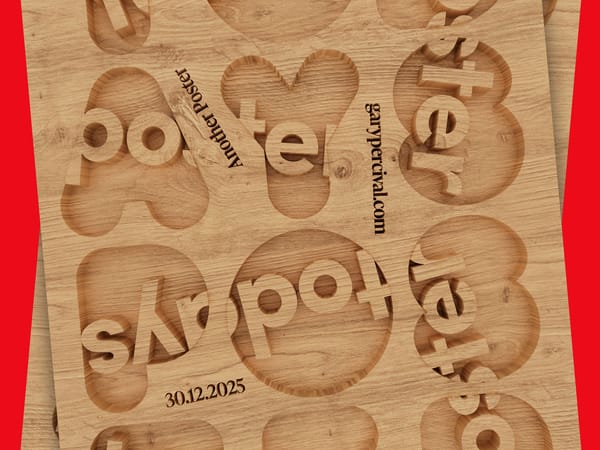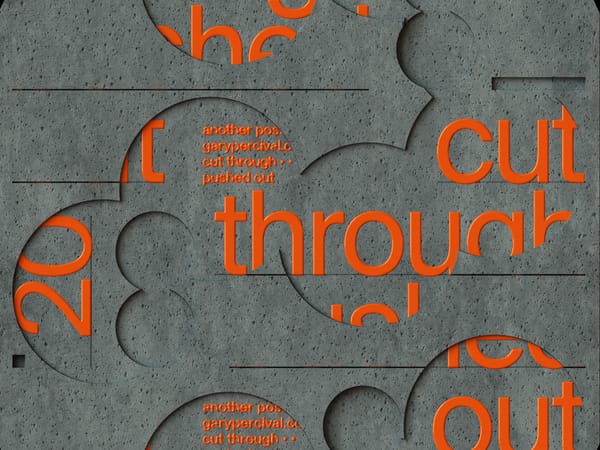Ripples and Tsunamis: Understanding When to Act and When to Wait
Recognising ripples is essential because it allows us to maintain perspective and avoid overreacting to minor issues.


As freelancers, graphic designers, and creatives, we often find ourselves navigating a landscape filled with challenges and obstacles. Some of these challenges are minor, like ripples in a pond, while others are more severe, like powerful tsunamis that demand immediate attention. Knowing when to act and when to wait is a crucial skill that can help us thrive in our careers and maintain a healthy work-life balance.
Recognising Ripples
In the context of freelancing and creative work, "ripples" represent minor setbacks or challenges that, while annoying, don't pose a significant threat to our success or well-being. These can include minor client disagreements, temporary cash flow issues, or short-term creative blocks.
For example, imagine a client who requests a small change to a design you've already completed. While it may be frustrating to revisit the project, the change is minor and doesn't significantly impact your overall workload or the project's success. This is a classic example of a ripple.
Recognising ripples is essential because it allows us to maintain perspective and avoid overreacting to minor issues.
We can approach these small challenges with patience and resilience, knowing that they will eventually pass if we identify them for what they are.
Dealing with Ripples
When faced with a ripple, the key is to remain patient and keep things in perspective. Remember that these minor setbacks are a normal part of the freelancing and creative process, and they don't define your worth or the quality of your work.
Practising clear communication is one effective strategy for navigating ripples. If a client requests a change or raises a concern, take the time to listen and understand their perspective. Respond professionally and cordially, working together to find a solution that satisfies both parties. By approaching these situations with a positive attitude and a willingness to collaborate, you can often turn a potential conflict into an opportunity to strengthen your client relationship.
Another helpful approach is to cultivate adaptability. As freelancers and creatives, we often work in dynamic and unpredictable environments. By embracing flexibility and being open to change, we can more easily navigate the ripples that come our way. This might mean adjusting our workflows, experimenting with new techniques, or finding creative solutions to unexpected challenges.
Finally, it's important to view ripples as opportunities for growth and learning. Each challenge we face, no matter how small, offers a chance to develop new skills, strengthen our resilience, and deepen our understanding of our craft. By approaching these experiences with curiosity and a growth mindset, we can emerge from each ripple stronger and more capable than before.
Identifying Tsunamis
While ripples are minor inconveniences, "tsunamis" represent more severe and potentially damaging issues that require swift action. In freelancing and creative work, tsunamis can include consistently late payments, scope creep, toxic clients, or unsustainable workloads.
For example, imagine a client who repeatedly fails to pay their invoices on time, causing significant cash flow problems for your business. Or perhaps a project that keeps expanding in scope without any additional compensation, leading to burnout and resentment. These are tsunamis that, if left unaddressed, can cause serious harm to your business and well-being.
Ignoring tsunamis can have severe consequences. Late payments can lead to financial instability and stress, while scope creep can result in missed deadlines, unhappy clients, and damage to your reputation.
Toxic clients can drain your energy and creativity, making it difficult to produce your best work. Unsustainable workloads can lead to burnout, health problems, and a loss of passion for your craft.
Addressing Tsunamis
When faced with a tsunami, it's crucial to take swift and decisive action. The longer you wait to address the issue, the more damage it can cause to your business and personal well-being.
The first step in addressing a tsunami is to set clear boundaries. This might mean having a difficult conversation with a client about late payments or scope creep, or it could involve ending a relationship with a toxic client altogether. While these conversations can be uncomfortable, they are necessary for protecting your interests and ensuring the long-term health of your business.
When setting boundaries, it's important to be assertive, professional, and honest. Clearly communicate your needs and expectations, and be prepared to stand firm in the face of pushback or resistance. Keep in mind that you deserve fair and respectful treatment, and it's acceptable to decline projects or clients that don't align with your values or goals.
In addition to setting boundaries, it's also important to take proactive measures to prevent future tsunamis. This might include developing clear contracts that outline payment terms, project scope, and other expectations upfront. It could also involve improving your client screening process to identify potential red flags early on, such as a history of late payments or unrealistic expectations.
By taking these proactive steps, you can reduce the likelihood of encountering tsunamis in the future and create a more stable and sustainable freelancing or creative business.
Balancing Action and Patience
Of course, not every challenge we face as freelancers and creatives falls neatly into the category of a ripple or a tsunami. Many situations require a more nuanced approach, one that balances action and patience, assertiveness and understanding.
This is where the art of discernment comes into play. As we gain experience and wisdom in our craft, we develop a keener sense of when to act and when to wait. We learn to trust our instincts and rely on our experience to guide us through complex situations.
For example, imagine a client who provides unclear or contradictory feedback on a project. Initially, this could appear as a minor annoyance that is easily manageable. However, if the pattern persists and begins to impact the project's timeline or quality, it may be a sign of a more serious issue that requires a firmer response.
In these situations, it's important to take a step back and assess the bigger picture. Consider the potential consequences of inaction, as well as the benefits of a more assertive approach. Seek guidance from trusted colleagues or mentors, and don't be afraid to have honest conversations with your client about your concerns.
Ultimately, the key to success as a freelancer or creative is to find a balance between action and patience, between standing firm and being flexible.
By developing the wisdom to know when to act and when to wait, we can navigate the challenges of our work with greater ease and resilience.
Conclusion
Ripples and tsunamis are a natural part of the freelancing and creative landscape. By learning to recognise and navigate these challenges, we can build stronger, more sustainable businesses and maintain a healthy work-life balance.
Remember to approach ripples with patience and perspective, using them as opportunities for growth and learning. When faced with a tsunami, take swift and decisive action to protect your interests and ensure your business's long-term health.
Above all, trust your instincts and experience. As you encounter new challenges and opportunities in your work, take the time to reflect on the lessons you've learned and the wisdom you've gained. By applying these principles to your daily practice, you can build a thriving freelancing or creative career that brings you joy, fulfilment, and success.
So the next time you encounter a ripple or a tsunami, take a deep breath, assess the situation, and choose your response with care and intention. With patience, persistence, and a bit of creative problem-solving, you can overcome any obstacle and continue to grow and thrive in your chosen field.



